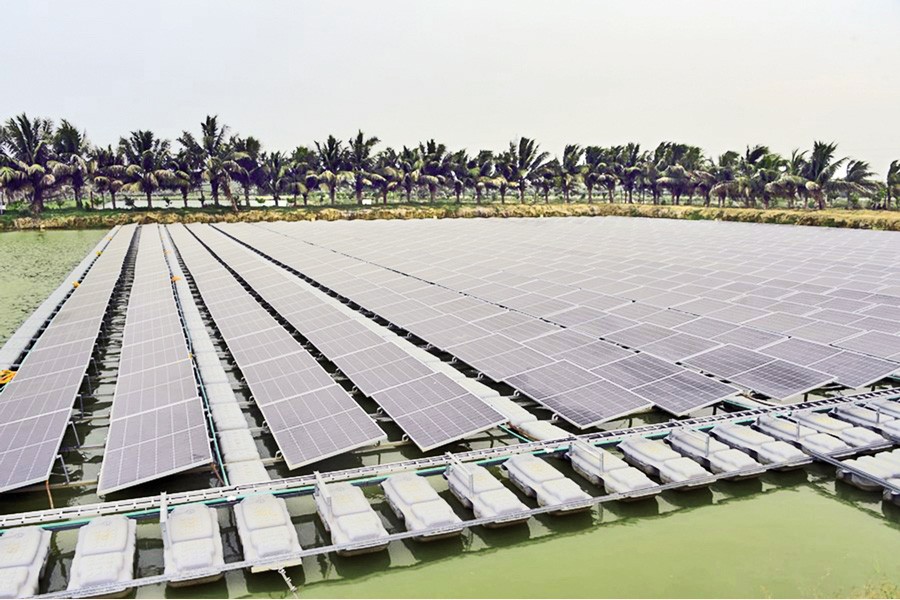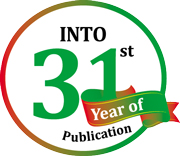
Promoting crisis-free renewable power sources
Mushfiqur Rahman | Sunday, 10 December 2023

 Rooftop solar power has been gaining popularity among industry owners and entrepreneurs in Bangladesh. The Net Metering Policy of the government has offered the rooftop solar power-producing customers of grid electricity attractive financial benefits. Managing Director of Ananta Companies Engineer Mr Inamul Haq Khan considers that 'it is common sense that guided him for installation of solar power systems on the rooftops of his factory buildings'. Ananta industry's garments factory located at Ashulia saves approximately Taka 10,600 electricity bills daily by using a 'net metering' facility. One of the group's factory building's rooftops (with approximately 20,000 ft2 open space) installed solar PV panels to generate commercially usable approximately 1,200 units of equivalent electric energy. As per the factory management, 17 per cent of the electricity needs for the factory could be met from the installed rooftop solar power when daylight is available. The garment industry simultaneously utilises grid electricity supplied by the Rural Electricity Board (REB-1), Dhaka and electric energy generated from its rooftop solar systems (and occasionally the captive power generator). Ananta Industries is not an exception in the Ashulia (REB, Dhaka-1) industrial area. Engineer Shahjahan Kabir, senior general manager of REB, Dhaka-1 informed that 78 industrial customers of REB Dhaka-1 had been supplying 5 MW electric power to the electricity grid under 'net metering' arrangements. Several more industrial customers are in the process of installation of rooftop solar power systems in the area. The factories and industrial enterprises may get the same cost return or adjusted with grid electricity bills if they connect their rooftop solar systems with the electricity grid under 'net metering'. Several banks, financial institutes and government agencies nowadays have been providing financial support and low-interest loan facilities for the development of renewable energy. Electric utility company REB appreciates the industrial customers' initiatives to generate and use electric energy at their factory premises burning no fossil fuel. REB, Dhaka 1 area now has a demand of 447 MW of electricity. If the REB customers consume less energy from the grid systems and supply their surplus electricity generated from renewable sources to the grid, the utility company is welcoming of their efforts.
Rooftop solar power has been gaining popularity among industry owners and entrepreneurs in Bangladesh. The Net Metering Policy of the government has offered the rooftop solar power-producing customers of grid electricity attractive financial benefits. Managing Director of Ananta Companies Engineer Mr Inamul Haq Khan considers that 'it is common sense that guided him for installation of solar power systems on the rooftops of his factory buildings'. Ananta industry's garments factory located at Ashulia saves approximately Taka 10,600 electricity bills daily by using a 'net metering' facility. One of the group's factory building's rooftops (with approximately 20,000 ft2 open space) installed solar PV panels to generate commercially usable approximately 1,200 units of equivalent electric energy. As per the factory management, 17 per cent of the electricity needs for the factory could be met from the installed rooftop solar power when daylight is available. The garment industry simultaneously utilises grid electricity supplied by the Rural Electricity Board (REB-1), Dhaka and electric energy generated from its rooftop solar systems (and occasionally the captive power generator). Ananta Industries is not an exception in the Ashulia (REB, Dhaka-1) industrial area. Engineer Shahjahan Kabir, senior general manager of REB, Dhaka-1 informed that 78 industrial customers of REB Dhaka-1 had been supplying 5 MW electric power to the electricity grid under 'net metering' arrangements. Several more industrial customers are in the process of installation of rooftop solar power systems in the area. The factories and industrial enterprises may get the same cost return or adjusted with grid electricity bills if they connect their rooftop solar systems with the electricity grid under 'net metering'. Several banks, financial institutes and government agencies nowadays have been providing financial support and low-interest loan facilities for the development of renewable energy. Electric utility company REB appreciates the industrial customers' initiatives to generate and use electric energy at their factory premises burning no fossil fuel. REB, Dhaka 1 area now has a demand of 447 MW of electricity. If the REB customers consume less energy from the grid systems and supply their surplus electricity generated from renewable sources to the grid, the utility company is welcoming of their efforts.
Apart from small-scale rooftop solar systems, a number of utility-scale large solar power plants have been generating electricity and supplying power to the national grid. At this stage, 1,194 MW electricity generation capacity has been installed (including 230 MW hydroelectricity, 595 MW grid-connected solar, 366 MW solar home systems (off-grid) and 2.9 MW wind-based power generation capacity) in the country. In the last couple of years, 595 MW of solar power has been connected to the national grid. Among them, the largest 200 MW single solar power generation unit is located at Sundarganj, Gaibandha. There are several more (more than 100 units) solar power plants in the process of installation in the country. Once implemented, around 10,000 MW of solar power units will be in operation and during the daytime, the national grid may receive the supply of electricity from solar power systems. The present installed electricity generation capacity (26,018 MW) in the country has been dependent on different primary sources (natural gas 44.11 per cent, coal 6.8 per cent, furnace oil 24.13 per cent, Diesel 5.15 per cent, captive 10.76 per cent, imported 4.46 per cent and Renewable 4.59 per cent).
Bangladesh's government has been trying to encourage power generation from renewable sources. The government targets to generate in phases 40 per cent of electricity from clean energy sources within 2040. The Power System Master Plan projected a 40,000 MW power generation plan within 2030 and 60,000 MW by 2041. Institute for Energy Economics and Financial Analysis (IEEFA), a non-government think tank predicts that Bangladesh would require an annual investment of $1.53 billion from 2024 through 2041 to attain its ambitious 40 per cent clean energy target. The IEEFA further predicted in its recently published report that the investment requirement was less than the power sector's current subsidy burden in the fiscal year 2021-2022. Therefore, a faster transition to renewable energy was suggested to free the power sector from growing government subsidy pressures. One of the major reasons behind the growing subsidy burdens for the power and energy sector is linked with the import dependency of primary energy (coal, gas and liquid fuels) and price escalations in the international market for importing the primary energy sources for power generation.
Although optimistic, the growing share of renewable energy sources for grid-connected power generation has been accepted positively in the country. In line with the government's policies, both public and private sector investors have been promoting renewable energy projects for grid and off-grid power supply. More and more industries and investors have been getting involved in developing 'solar parks' and 'wind farms' in Bangladesh. During the last couple of years, a lot of technological developments have taken place in the renewable energy sector. The alarming rise of the greenhouse effect and global warming, and the disastrous impacts of fossil fuel burning for power generation have pushed the major economic powers to mobilise resources and their capacities for implementing renewable energy projects worldwide. Global leaders have been raising voices for putting restrictions on promoting fossil fuel-based power
Continued to page 10
Continued from page 9
generation as power plants using fossil fuels are the major contributors to greenhouse gas emissions in the atmosphere. They have been promoting renewable energy projects both regionally and globally.
Sustainable and Renewable Energy Development Authority (SREDA) in Bangladesh believes that 2,000 MW grid-connected rooftop solar power could be generated in the near future. The World Bank study considers that 20,000 MW of solar power could be generated from Jamuna river char areas in Jamalpur district. IFC is hopeful that approximately 11,000 MW of solar power could be generated from different water bodies if the potential of floating solar technology can be utilised. Government's policy support, easy loans and other supports have been attracting more investments in the sector. Bangladesh Power Development Board have been signing 'Power Purchase Agreements' with renewable energy producers with attractive power tariff (the cost of power from the first 3 MW size commercial plant was agreed at $0.18 cents/unit, and the power tariff agreed with 200 MW capacity solar park was $0.15 cents/unit). BPDB sources suggest that the average power tariff from new solar power plants is $0.12/unit. The projected cost of power from the renewable energy sources in the pipelines (108 renewable energy projects) will vary from $0.9 to 0.12 per unit. According to available information, the power tariffs from renewable energy sources are cheaper compared to liquid fuel-based power plant tariffs. However, the power tariff from renewable sources remains high compared to the power tariff generated from natural gas and coal.
On the contrary, published sources of information indicate that the power tariff in India and many other countries of the world generated from renewable sources ranges between US Cent 4.5/unit. Investors are less optimistic that the power tariff for renewable sources will be reduced further in Bangladesh. Local experts believe that power tariffs in India and in Middle Eastern countries will be advantageous compared to local renewable power sources for a number of reasons. Sector experts consider that the power tariff for renewable sources of energy will remain high in Bangladesh unless the government supports arranging suitable land, and power evacuation facilities. Also, import tax and duties for equipment and accessories required for power generation and evacuation from renewable sources should be favourable for investors.
The sector experts have been raising concerns with the rapid development of renewable power plants. They are asking for a careful assessment of the pragmatic electricity demand forecast in the country for the years to come before signing power purchase agreements from different large-scale solar parts and wind firms to avoid the 'idling capacity' development trap. In addition, the power grid stability issues raise concerns. Renewable energy expert and former BUET Professor Ijaz Hossain in his recent interview with Energy & Power (November 1, 2023) stated that 'there will be grid stability issues even if 50 per cent of the (renewable energy) projects in the pipeline are ready for operation.' The intermittent nature of solar and wind power if for some reason becomes unavailable, the grid stability will suffer. Prof Ijaz considers that Bangladesh will need a 4,000 MW capacity simple cycle gas-fired power plant and 2,000 MW capacity peak-load based power plants for managing 10,000 MW (projected renewable source based power plants under implementation) for securing grid stability from intermittency of solar power.
The assessment of electricity demand for distribution utilities and end users is generally manual in Bangladesh so far. There is an urgent need for integrated development and modernization of generation, transmission and distribution networks for smooth and stable grid operation. Without the coordinated development of power generation from different sources, and modernisation of transmission and distribution systems and real-time demand management systems grid stability and rational use of installed capacity will remain a serious challenge.
The author is a mining engineer. He writes on energy and environmental issues.
mushfiq41@yahoo.com